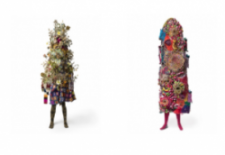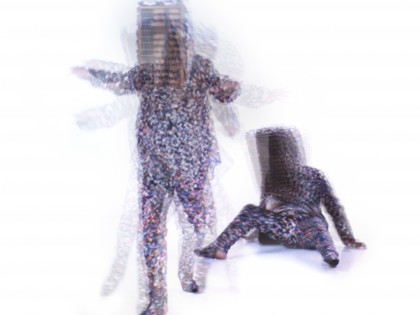SUIT YOURSELF It’s been a decade since Jason Linetzky, director of the Anderson Collection at Stanford University, first encountered Nick Cave’s famed “Soundsuits.” “I was struck by how present the works were, the material choices and how Cave’s assemblage brought up memories and assigned new meaning,” he recalls. “They make us look, examine, question what we are seeing.” In September, the Anderson Collection opened an exhibition, N ic k Cave, that includes eight “Soundsuits.” The life-size sculptures can be worn as costumes and performed in, and are comprised of a melange of objects—from buttons and beaded baskets to sequins and sock monkeys—that elicit a range of reactions as viewers draw on their own associations with the items. While the styles and themes vary, the “Soundsuits” are often conceived in response to current events. Cave developed the first one in 1989, after the Rodney King beating and subsequent riots; it was made of twigs and discarded elements. When worn, the ornate creations both call attention to and obscure the person inside. (For the show on campus, the “Soundsuits” are displayed as static forms.)
The exhibition runs through Aug. 14 and also includes videos and a documentary film about the artist and dancer, who is the director of the graduate fashion program at the School of the A rt Institute of Chicago. “The museum is committed to connecting broadly with Stanford students and faculty,” says Linetzky, “and Cave’s interdisciplinary approach to his practice—his merging of sculpture, performance, fashion and video— and his emphasis on community and social engagement, should speak deeply to our visitors.” 314 Lomita Drive, Stanford, 650. 721.6055, anderson.stanford.edu – Anh-Minh Le
MIXED MEDIA A Nick Cave “ Soundsuit,” created in 2009, is composed of synthetic textile, metal and paint. It is currently on display at the Anderson Collection







